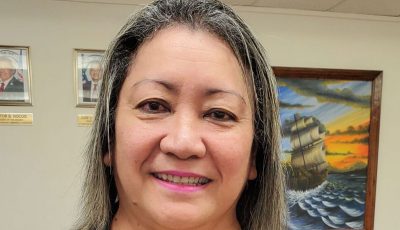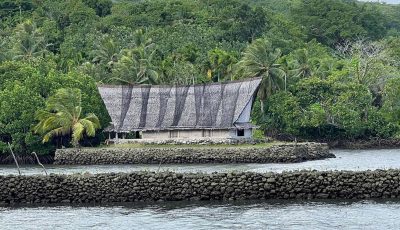Diving into the world of marine monitoring
By NICK KOSACK
Special to the Saipan Tribune
Growing up on Saipan I developed a deep love for the natural world. It provides us with food, recreation, and jobs from tourists who want to come and appreciate the island’s beauty. It is my belief that, both locally and globally, environmental degradation is one of the biggest threats to our health and prosperity. After I graduated college and spent some years in the work force, I felt the need to do something with my career that could make a difference and contribute to a cause that mattered to me.
I have returned to school with a new perspective, transitioning from the arts to the sciences. Currently, I am taking classes at the Minneapolis Community and Technical College where I will be getting my associate degree in biology. After that, I hope to transfer to the University of Minnesota where I will pursue a degree in Environmental Science Policy and Management with an emphasis in Conservation and Resource Management.
It is an exciting journey and the Coral Reef Internship is an invaluable part of that. The CRI program is an amazing opportunity to get hands-on learning outside the classroom and see what a career in this field would actually be like. I’ve had the great fortune to be accepted into the program and be placed in the Division of Environmental Quality with their Marine Monitoring Team. My mentor here, Steven Johnson, is a past intern himself and provides both scientific and technical instruction as well as perspective on how these things interact with the social and cultural context.
My primary project during the internship is collecting water quality data at the various survey sites offshore around the island. To do this, the tools I use are a YSI and a turbidimeter. The YSI has a sensor that is placed in the water and provides information about the temperature, pH, dissolved oxygen level, and salinity. The turbidimeter measures a sample and tells us how cloudy the water is. All of these measurements give us important clues as to the health of the area’s seagrasses and corals. The chemistry of the water is particularly important to seagrasses and corals because, unlike fish or people, they are unable to relocate to a new area if conditions are no longer favorable or even dangerous.
Reefs can only survive within a narrow range of conditions and may start to die off with changes in the water chemistry. Keeping the reefs as healthy as possible by managing local conditions is the best and only defense we have against the global rise in ocean temperatures. These organisms are important foundations for the local ecosystem. They provide a place for fish to feed and grow and protection from the large waves created by storms.
The data that I am collecting gives us a quick snapshot and a hint of what these conditions are. However, the true value of the data is when it is combined with other data sets and multiple measurements over time. By comparing it to future measurements we can spot trends. We can find statistical correlation to find out which factors are having the biggest impact on reef health by adding it as an extra layer of information combined with measurements of coral health at the same site. Even better, we can use the data to evaluate the effectiveness of management strategies being implemented on shore. If a certain project is being done to reduce runoff the data should reflect this over time. If it doesn’t, then we know that tactic is ineffective and that time, effort, and resources should be shifted to different techniques. Feedback on effective strategies reduces waste and improves our knowledge and ability to implement management practices that work well.
My time as an intern has been more than collecting water data as well. There is always something new to learn and it has been a great experience. I have also participated in reef surveys, CoralWatch events checking for coral bleaching, cleaning of the CREWS-ICON station in Lao Lao Bay, educational outreach events, discussion groups, and helping some of my fellow interns with their projects. There is no substitute for learning by doing and I’ve had the chance to do a variety of things. It has been a fantastic opportunity to see what science out in the field is like.





















